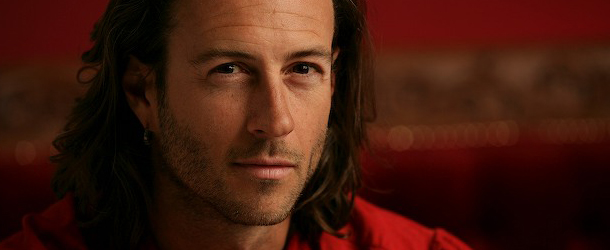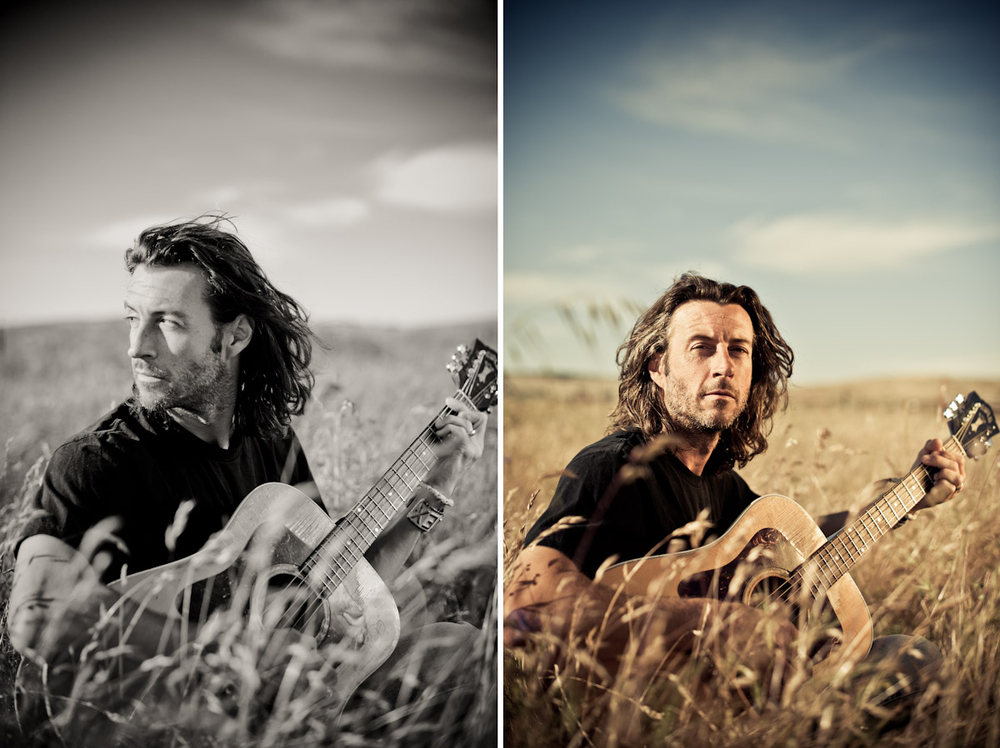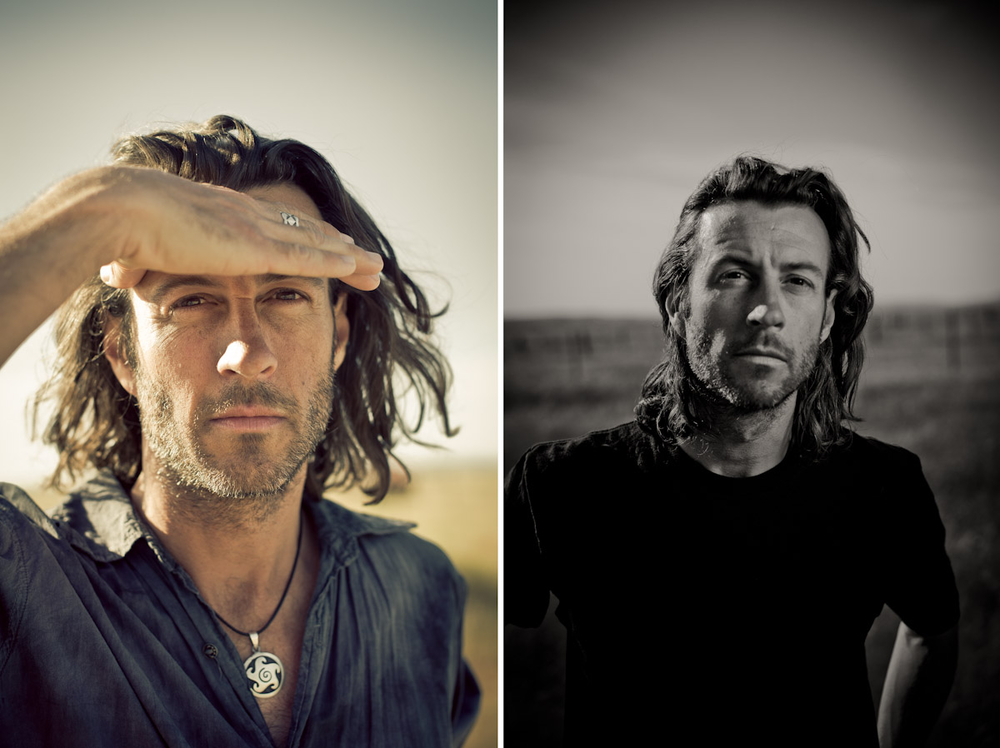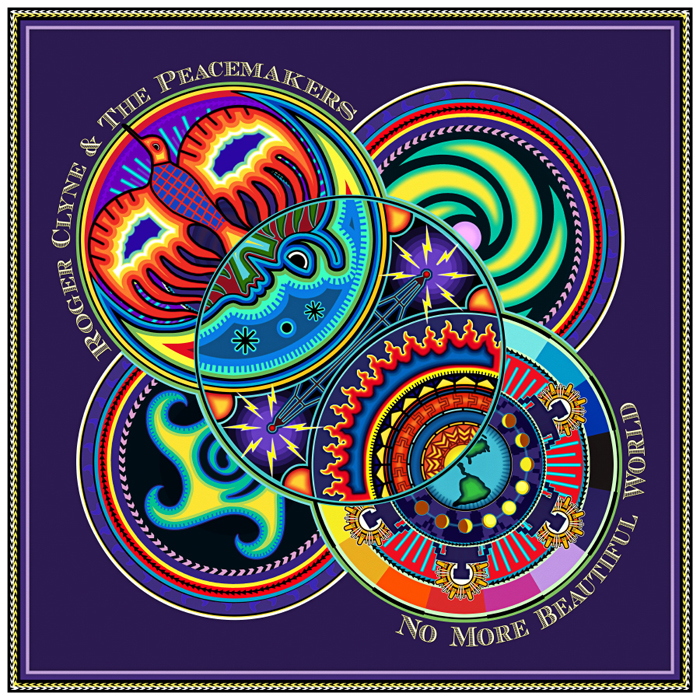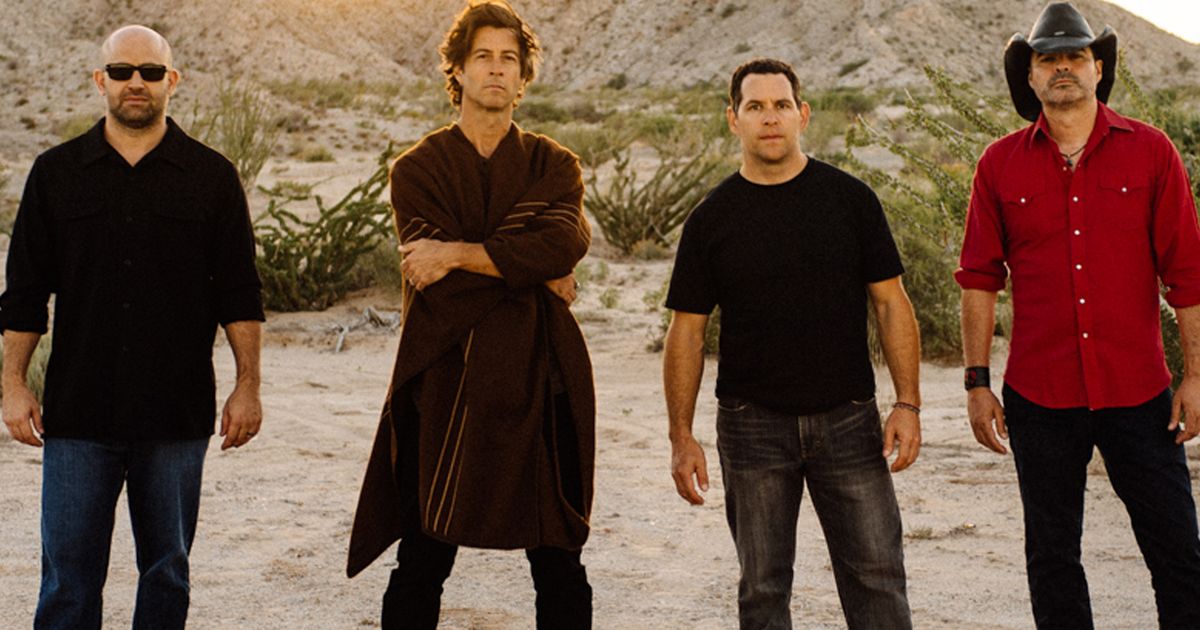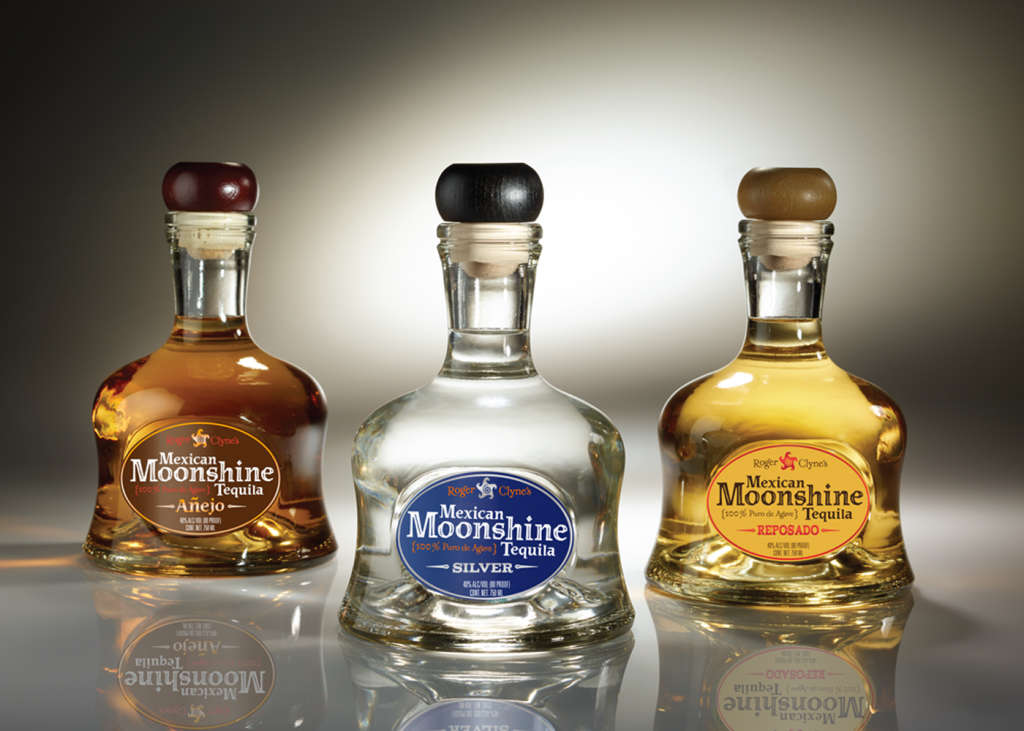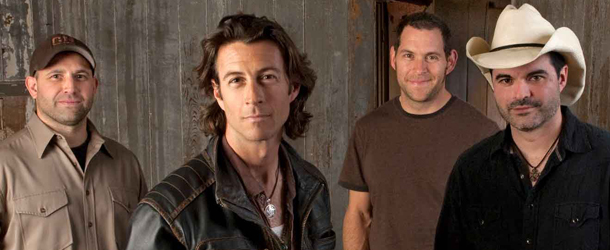I INTERVIEW MY HEROES: ROGER CLYNE TALKS MUSIC, ART and INSPIRATION
<I ran a music blog for many years, and during that time I was able to interview some of my biggest musical heroes. Roger Clyne is one of them. I’ve done a lot of artwork for them over the years!>
Ever since I saw the video for The Refreshments “Banditos,” I have kept Roger Clyne’s music within arms reach at all times. The mid 90’s was a time of the apathetic “shoe gazing rock” and The Refreshment’s Fizzy Fuzzy Big and Buzzy album was the ‘full of life’ antidote I needed. Instead of the grunge mantra of “I hate myself and want to die” it celebrated happiness, life and friends. Roger’s voice and lyrics spoke to a very specific part of my heart on both Fizzy and its followup The Bottle and Fresh Horses. A few years later, with a bit of a line up change, Roger and P.H. Naffah formed Roger Clyne & The Peacemakers which continued the tradition of soulful and spiritually refreshing music.
I have had a very unique opportunity as a commercial artist to do some artwork for RCPM over the last 8 years and I’ve had the opportunity to talk to Roger about visual art and artistic inspiration. I’ve caught myself thinking “Man, I’m sure a lot of people would be interested in knowing how passionate he is about visual art as well as music. It’s a shame he doesn’t get asked about it too much in interviews.”
Well, here we are.
To only reinforce everything I have ever said about being “super cool; and down with the independent, grassroots spirit.” Roger let me interview him to discuss art, creativity and the new album The Independent!
Andrew Cremeans: Roger, thank you so much for taking the time to talk today! How was the first leg of the tour supporting The Independent?
Roger Clyne: It was a total blast, actually! First of all, it is selfishly fun to perform new material. It’s very exciting because of it’s novelty and also the message it delivers. The coolest part, I think, is I see more people who know the words earlier in the tour. Typically, it takes a little while for people to learn the words to a tune. I find typically it takes… I don’t know, maybe 6 or 7 weeks into a tour cycle before people are shouting the lyrics back as loud as we can shout them. We are already there! The first few gigs, like in San Juan Capistrano and Solana Beach the crowds were already yelling the lyrics back and that was really cool.
–
AC: People have been extremely receptive to the new album! I have read TONS of great reviews recently, lots of 5 star reviews…
RC: That’s good! I mean … I’m pleased to hear that, I just purposefully stay away from reading reviews because I’ve got to take the good with the bad, you know? I basically try to make sure I’m doing my best to be a writer, performer, musician, artist, poet, etc. Put it all together, make a good recording and release it …hopefully independent of the good or bad opinion of other people. I don’t want to say I don’t care, because I do, but I have to remain unconcerned in order to stay focused.
–
Photo by Micah Albert
AC: I feel like there are definite overarching themes to your albums, do you think The Independent has one?
–
RC: I do! I do feel The Independent has one. It’s a very honest declaration, like most of my tunes are, but I didn’t go out of my way to paint any silver linings on this one.
I find myself a man of my forties and I’m kind of just describing the landscape right now between where I thought I would be and where I am.
There is a lot of gratitude in there but there is also frustration …ennui, and I find a lot of people my age are experiencing that. So instead of lighting a candle I’ve just sort of described this time in my life. I find that in doing so, our listeners gain some relief because sharing in suffering is the beginning of compassion …and it’s better to suffer in company, you know? It feels like we’re not alone. So, when I wrote this record there were purposefully no story songs, it’s not entirely metaphorical and it’s not as poetic as some records before. It’s a very straight description of where I am.
–
AC: You have been writing music with PH Naffah for over 20 years …alongside many other great musicians. I’ve found being creative in collaboration can bring amazing work you would have never have done by yourself …but also sometimes frustrations you wouldn’t expect. What are some of the things that you attribute to the successful longevity of your creative relationship?
RC: That is entirely true. The creative process, especially when you are collaborating with somebody, can be incredibly rewarding but can be incredibly stifling. It definitely has its moments of frustration but they are balanced with incredible revelation.
PH will bring my art …out, you know? There are times we disagree on things, but it’s not usually in the realm of art. It’s usually in that strange crux… that confluence between art and business. That’s where we usually get sideways with each other. We’ll argue about business decisions, but at the core of it, we are friends. We started this thing together. We have a deep respect and admiration for each other and you don’t get that often in life. So we make sure we don’t squander it on petty things.
–
AC: I’ve come to realize that most of the bands I love to see are road dogs at heart. Any time I’ve seen you play, no matter the size of the venue, you guys play like it’s a stadium. How do you maintain that much energy after 15 shows in a row?
RC: (Laughs) I don’t know! The music has a certain kinetic and frenetic quality to it. It is just natural. There are other artists I have seen that are just full of energy and in any interview I have ever seen with those guys, like Bruce Springsteen or Joe Strummer, they say it comes naturally.
Joe Strummer said enthusiasm is contagious and I think we show up enthusiastic. The crowd is also enthusiastic and it creates this… ‘the whole is greater than the sum of it’s parts’ sort of feel. It gets electric, and gravity doesn’t seem to work very well around our stage. So it seems pretty easy.
–
AC: When you play non-stop for long periods of time, do you guys have any strict regimens that you put yourself through to maintain your energy or your voice or…?
RC: Yeah, a few things actually. One is to make sure that I’m not the one who is making up all the set lists. To make sure it stays fresh, we’ll have sorta “democratic meetings.” Everyone is involved in making the set list. If I’m the only one doing them, I have certain habits and it can get a little bit routine. I prefer a certain segue from song to song, so I have the other guys help me break them up so that it feels fresh. For example Jim will say “Let’s throw in “Goon Squad” and that isn’t one I would have thought of for Des Moines …and we’ll do it, and it’s fun!
Regarding physical stuff, you know everyone has their own thing. I listen to my doctor’s orders, like my Ear, Nose and Throat guy, who says I am supposed to limit my time outside the bus on cold nights. If it is like, 40 degrees or under, it’s really bad for a larynx to work that hard so unfortunately I don’t do as many ‘Meet and Greets’ outside the bus in wintertime or fall.
I just recently…in Bloomington actually, I had my voice completely blow out in a way it never has in the past. I had to take a course of pretty heavy corticosteroids to get the inflammation down so that I could get through the last six dates of the tour. It was really no fun. Those things are powerful.
My voice blew out during that show in a way I had never felt before, so what we did was turn the show into “Karaoke hour” to get through it. We asked if people wanted to get up and sing “Green and Dumb” or “Counterclockwise” and a few others …and we just accompanied them. I’d cue them as to the lyric that was coming next if they looked at me blankly and it was really fun but I couldn’t sing at all.
–
AC: That actually sounds like it would have been awesome to be part of!
RC: It was fun, I was so glad the crowd stayed and they did. It was sort of a train wreck but it was a great party.
–
Photo by Micah Albert
AC: I’m always intrigued by other people’s creative process. “Artistic Fatigue” creeps into every artist’s life at some point, how do you fight that off?
RC: Hmmm, it’s true. You speak true words.
It seems easier to create at the beginning of your career than later …and I think that is natural. Its more and more difficult to get return out of stuff.
The first time I ever put together a 1-4-5 chord progression, a melody, and a rhythm I had a song! Bam! It was that easy. Now, I have used those chord progressions and a lot of the same themes so it gets more difficult So, it is true.
I do a couple of things. One: I take notes. Whenever I find myself inspired, I write everything down so I don’t forget it because I have a terrible memory. I’ve found that if I find myself inspired, even in a very minor way, and I let it go …I typically won’t remember what the hell it was. So, I write everything down, whether it be an observation or a thought …whatever it is that inspires me I write it down and/or I will hum it into my recorder that I always carry with me.
Two: I schedule time. I have what is called a ‘writing discipline.’ I have found in the past that I used to write better at night, so I would start at 10pm and go to 3 or 4am, but lately I do better if I wake up about 4:30am and then work till about 11:30am or noon and just stay as isolated as I can. I don’t have any interruptions from cell phones, email, text, computers, or other people. I just sequester myself.
Sometimes, I will come out of my sequestration with material or with progress …others I wont. But, I know if I don’t make myself disciplined enough to sit and a try to hear the muse it just won’t happen. It doesn’t come through the din anymore.
–
–
AC: I have also gotten to know you on the visual arts side of things. I was stricken by how passionate you are about the arts in general. How often do you find the visual arts influencing your music?
RC: Wow, quite often actually! I find that pictures really are worth a thousand words and I find it very often that visual arts will be inspiring to my work. Whether its something that existed for a thousand years that I have just discovered, or perhaps rediscovered, or if its something that is brand new and novel. Some photo in who knows what tabloid, anything can jar lose inspiration. I find looking at things visually can be very, very powerful.
–
AC: We have seen RCPM artwork from all across the board, inspired by such things as Cuban Revolutionary art, Cine Mexicana Movie Posters, tattoo art, straight up Cowboy Americana, even album art inspired by the Huichol Indian Yarn Paintings. What goes into the process of choosing visuals with the music?
–
RC: It usually comes as I am writing or when we are in the process of what I call ‘pre-production’ when we are putting songs together and seeing if they fit thematically. That’s usually when I get a little more perspective on the common theme through the music. That is usually when I’ll start looking for something like …No More Beautiful Word, or Turbo Ocho or Unida Cantina. I find an idea or get some idea of how it could be visually represented and then I start there. It’s usually super clumsy and that’s when I look for people like you to help me flesh it out.
–
–
AC: The RCPM “Glyph” seems to be a staple, can you give us a little history on how that came about and what it means to you?
–
RC: Yeah, for me its simple. It’s a symbol of ‘becoming.’ A personal and hopefully a collective evolutionary process of improvement …of self and community betterment. So I like to use the word ‘becoming.’ I found it not as a whole actually, I found it looking into Native American art from this area. Looking at the art from the Hopi, Navajo, Hohokam, and Pima. Little by little the thing sort of revealed itself and here we have it! I hope it’s a visual representation for The Peacemaker Community.
–
AC: It’s very iconic, and it seems to speak to the fans. There are TONS of glyph tattoos I’ve seen online!
–
RC: Yeah, I love that! That’s an honor. Now I feel I’m behind everyone because I used to think ‘Well, I’m going to be the first to get it as a tattoo!” but now there are thousands of people who have beat me to it. Now I am just trying to figure out how I can get one somewhere on my body that will be just a little bit different. Everyone’s figured out their own color or a shade or some motif …they put it in a landscape or make it out of letters, it’s great. Now I’m sitting here kind of stymied. I definitely want to get my own Peacemaker tattoo. I’m working on it.
–
AC: I have never heard anyone sing so eloquently and longingly of “home” like you do with Mexico and The Sonoran Desert. Can you tell us how you came to fall in love with it?
–
RC: Yeah, it helps to be born here I think. It’s literally where the molecules I’m made of were resting for a few millennia before they became my physical being.
I grew up with the poetry and the stories and the legends and the heroes that come from here. The ideas that were before borders. It’s easy to feel this way because this land is vast and its people are ancient and also modern. It’s just easy to look at it and say “There is no way I will EVER be able to represent it or even experience it as much as I would love to. I would love to explore this ocean forever but my life will be too short no matter how long I live.”
–
AC: That’s such an incredible gift. I’ve don’t believe I’ve ever felt that spiritually connected to a place before.
–
RC: It is. Even in small things I feel a resonance with home.
I can wake up on the bus knowing that we are on our way back to Arizona and before I know where we are, I will go to the back lounge and just open a window, look at the sky, and I can tell. I can tell without seeing a road sign where we are. I just know when we are getting close. I can feel the pulse of the place.
–
Photo by Micah Albert
–
AC: I hope this isn’t too personal of a question, but I’ve heard you dedicate (probably one of your biggest fan favorites) “Mekong” to Michael O’Hare who was with you when you wrote it. Can you give us a little bit of that story?
–
RC: Sure! No problem! Mike was a very close, maybe my closest friend, throughout my 20’s. He was a guy I met in college and he was just a true adventurer. He was born with a disease called Cystic Fibrosis, which is a terminal disease, and back when he had it …every birthday he garnered was supposed to be the average life expectancy of people with that disease.
When he turned 20, that was the life expectancy. When he turned 21, it was the same thing. It kept going up until finally he actually got ahead of it.
He lived life on purpose. He lived with passion and vision and took risks most people would never take, because he knew that he had a very short time on this planet. He just did NOT fuck around. He was incredibly influential in how I made my decisions at the time and how they influenced my fate …my destiny. I wouldn’t be here had he not been my friend, I would have never had stepped on the road less traveled had I not known him. I would probably be a psychology professor instead of a tequila troubadour.
Anyway, he was with me in Taiwan when we went from Taiwan to Bangkok, Thailand. We were on the same sort of “world sojourn” together. We went from Phoenix to Hawaii, screwed around there for a little while, then went from Hawaii to Taiwan. We taught English for a summer there, collected some money, and then just globe trotted through Southeast Asia.
That song was written down there in Bangkok when he and I were together, probably screwing around for a week before we went out to the islands.
–
AC: Wow! And “Here’s to life!” has become kind of the mantra of the group! It means so much more now that I’ve heard that.
–
RC: Yeah! Yeah, and it really came from his ethos. ‘This is it!’
There are so many trite ways to say ‘be in the present,’ ‘live now,’ or ‘stay inspired’ all that shit. He lived it! He was the embodiment of that and I was very, very lucky to have spent a decade with him as my company and my teacher
–
AC: Awesome. When it comes to creating… you guys have such a specific sound, have you ever felt constricted by the expectations of the genre? Like… Do you guys ever feel like saying “Screw it, we’re doing a techno album.”
–
RC: (laughs) I think so, but probably more in looking for a direction I haven’t taken. Not so much feeling constricted, because still I don’t know what to call our music. It really defies genre, for better or for worse, so there are times I am looking for new directions.
I was actually wanting to do an acoustic reggae record just to see what I could come up with for it. The boys in the band, said “No, let’s do an old-school heavy metal record!” And those things are appealing for a time but I have yet to really follow that thread.
It always comes back and there is a consistency we have in our voice I’m very pleased with now. As you know as an artist, it takes a while to find that voice and now I’m pleased with it. I’m glad we have the sound that is RCPM. Even though every album might sound a little bit different, thematically or musically, when you listen to it you can tell pretty quickly it’s our voice. I think that is a good thing to find in this very very busy world.
–
AC: I’ve talked to a lot of musicians and they all have very specific views on streaming music, like Spotify or Pandora or Beats Music, can you tell us how it’s affected your approach?
–
RC: That’s a big question, and I am actually torn.
Anytime we make an album as an independent band, or actually anyone makes an album for that matter, has to pay for it in some way or another. There are costs associated recording time, getting people together, guitar strings and all that stuff. So it is an economic endeavor to memorialize the art in order to share it. It’s just a fact.
I think every artist wants to share art first. I mean, I can speak for myself, I want the art to proliferate, I want it to go out there and be shared …and have whatever effect it is going to have on the world. That’s where our creative center is I think as artists. We want to… it may be selfish but we want to have some effect. We want to have a resonance because of our art, we want there to be a change. When that happens it is gratifying.
I get to see it with The Peacemakers audience. I see it with the community. I hear everything from “we walked down the aisle to ‘Green and Dumb’” or “our daughter’s wedding song was ‘Maybe We Should Fall In Love” or “our favorite road trip companion is ‘Fizzy, Fuzzy, Big and Buzzy’” or “I was going through health problems and your music got me through” and that’s really what we wanted it to do.
It’s when people start talking about economic effect is where they get most discontented. For better or for worse in this world we have to have some economic platform to share our art, like I just articulated with recording cost and stuff… and touring is the same way. Nobody gives us diesel and tires or bus insurance for free, you know?
I think artists get most discontented when they find there is no longer an economic effect to their art, and I understand that, but I think it should be viewed as secondarily important.
We have carried on and we’ve refocused on how “make money” or pay the bills with our art through t-shirts, ticket sales, and fully engaged live performances. We even have a concert weekend in Mexico and our own brand of tequila. There are other ways to create income streams. The art has become a loss leader and I know people get dyspeptic about it not making the artist, or the artist’s parent company, money anymore …but for me I think the primary focus is on effect for the individual and the community.
Hmmm …I don’t know if I actually answered your question very well.
–
AC: No. you did! That makes perfect sense!
–
RC: I mean, if I had my druthers I would be making more money, but that’s not why I started this thing! Like I said earlier, I chose ‘the road less traveled by’ deliberately. I knew what I was getting into! Actually, I had no idea what I was getting into, but I knew it wouldn’t be nearly as safe or predictable as what I could have gotten into. So you’ve got to take the hits in stride.
If the digital genie has demonetized music because it gets shared, okay …but here’s the other part of it… it gets shared! So, there we go!
We thank our hardcore fans for buying our albums because that means we are going to recoup our costs and we are going to be able to make a new one. It means strings are going on the guitars, there is going to be diesel in the bus, we can pay our driver and we’ll get on to the next stage. I think most people understand that.
Man, there is a significant group of people who we keep seeing their names show up in Peacetime Goods, which is our merch site, buying stuff over and over again! 15% of the people are responsible for 50% of our gross receipts! It’s humbling and it’s really great.
–
AC: In your travels over the years have you had a moment when you met a hero or jammed with someone you looked up to musically? Do you still have moments when you geek out?
–
RC: Yeah, totally! I remember the first time I met Johnny Hickman and David Lowery of ‘Cracker’ fame. I was basically tongue-tied. I was in The Refreshments and we were playing at a festival where Cracker were also playing and we were sharing some backstage tent. I got to meet those guys, and you know, they are 10 + years our senior and they are road dogs, and they are just …cool. Anyway, I felt like a real school girl.
Then just luckily through staying on the same circuit and sharing this same weird art world and club scene together, we just kept bumping into them.
Now, I can call them my friend which is REALLY cool. Whenever I see him on stage, it’s weird, I still feel like they are gods …like I don’t know those guys. Like “Oh my god, look at what they do on stage! I’m not worthy!”
–
–
AC: I am also a huge fan of Mexican Moonshine, your own brand of tequila, can you tell us how you decided to go that route?
–
RC: Well, tequila is a very southwest spirit. It is naturally a part of this geography, so I was first exposed to it when I was a kid. I’m the son of a ranching family from southeast Arizona and …before the border was such a big deal and before a lot of politically charged issues and ballyhoo were assigned to it, we used to cross back and forth easily, liberally and frequently. We would exchange labor and services with the Mexican people just there on other side of the border. So summertime would be when we would be going back and forth to help on that side they would help on this side. I remember the first time I got to try tequila was during a break from a round up in the summer time. We had a bunch of vaqueros who were working with us moving cattle from one pasture to another and we used to come in during the early afternoon and take a break and have a picnic in the barn. I was putting horses away in the back with some Mexican vaquero guys, I was young, I was probably somewhere between 11 and 13 years old and I thought these guys were men, in hindsight they were probably 16. Anyway, they tied up the horses and pulled a bottle out of a saddlebag and each took a quick gulp. One of them took a quick gulp out of it and handed it to me. It wasn’t as if I hadn’t been exposed to alcohol, you know, my father and grandfather were drinkers, so …to be ‘a man’ I took a hit off their bottle and it was supremely smooth. It was like magic. It was tasty and reinvigorating. It was this energy in a bottle that instantly got into your bloodstream, but it wasn’t distasteful …it was good! I asked what it was because it had no label on it and they said ‘Tequila!’ I remember that was the first time I had heard what that was. It’s just been a part of my life ever since. I remember that experience was super smooth …authentic. It was just a great experience.
I started seeking that out in my college years, trying to find that stuff called ‘tequila,’ but all I could find at the time was whatever was dominating the market, which was usually Jose Cuervo, or some other cut rate swill.
Fast forward to later in my college years when I moved to Ensenada, Mexico to participate in a Spanish immersion program and an Anthropology program doing ethnography, the study of living cultures.
I chose to follow around mariachis to get the stories behind their songs. Some of their songs are ancient, they are hundreds of years old, and to learn what they were doing.
–
AC: That sounds so cool!
–
RC: It was cool! Everybody was so jealous that I had chosen that!
I was going out at night, buying an extra pack of cigarettes and following these guys around …and when no one tips them, I tip them …and little by little I would just follow these groups around. They have this circuit they do, I kinda worked my way up through the teams of several mariachi bandas, and I got to hang out with the alpha banda. They are the ones that get to go first, they get to pick the best places, sing the best songs, play as long as they want …everybody else has to sort of fall in line.
Anyway, I was sitting around with these guys. I basically just handed out cigarettes and asked questions and jotted down the answers. Often times a bottle would break out, and it would just bypass me. I didn’t step in to try to get it, I didn’t want to impose, I am the gringo asking all these questions …and finally, after being with these guys and doing this circuit forever the bottle came to me. I’ll be damned if I would let it go by, so I hit it, and hit it hard.
It was that same exact taste I had back behind the barn so many years ago at the ranch. So I pass it on and I didn’t even flinch because it was delicious! I said “What is that?” and he said ‘Tequila!’ I said “Its not like our tequila, not like what we get in the states!” and they said “We don’t send you the good stuff!” and there began the question, well why not?
Then I started asking, ‘Well, why can’t we find the good stuff? What is this?’ and that sort of began the quest for what we now call “ultra premium tequila” which is sort of a misnomer, it’s just the right kind of tequila …real tequila. It’s 100% blue agave, and what we do with Mexican Moonshine is we double distill it, and triple filter it. We use older agave so the carbohydrate palate is wider, you can do more in the distillation and the flavoring …actually you don’t flavor it it’s just what is done with time and heat… but we remove fusyl oils, aldehydes and methanols which are primary architects to of a hangover …and we’ve got a world class tequila that is like it used to be. It used to sit on the table top in the hacienda and you could you’d walk by it and pull a sip off of it. Or hand it off to your friends and family around the yard or put it in your saddle bag …but it was always smooth and great and we’ve recreated that. We’ve gone back to the way it should be.
–
AC: Cool! That’s actually a great story! So, what’s next for RCPM?
–
RC: Wow, for now its just finish up the rest of the ⅔ of the United States after we do our Circus Mexicus show. We need to do the northwest which would be northern California, Oregon, Washington, Idaho, Montana, then back to Colorado and New Mexico. After that, we will fly out to the east coast to complete our US tour.
We’re still writing. We started writing right after we stopped recording the last album so we’ll see when we come up with something new. We have had a lot of requests for some sort of a “what we think is our best work” kind of compendium. Man, I hate to use the words “greatest hits” because I don’t think we have had any hits. (laughs)
–
AC: I’m sure there are many fans that would disagree!
–
RC: I guess it just depends on what you consider a “hit.” If the fans get to define “hits” then we are fortunate and we’ve had quite a few! We are toying with the idea of releasing something later this year with that in mind!
–
AC: Awesome! Thank you so much for taking the time to talk today, Roger! I really appreciate it!
–
RC: Well, thank you! It was my pleasure!
Leave a comment

